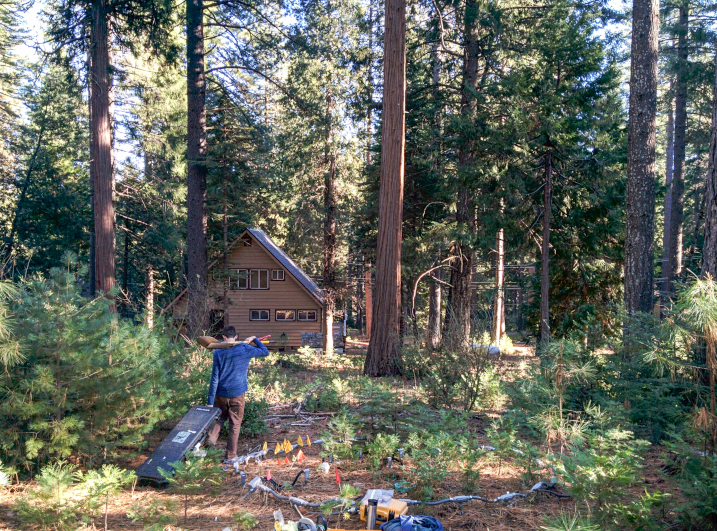Microbiologists study how tiny soil-dwelling microbial organisms behave individually and in community in order to evaluate how climate change is affecting the extent carbon is being released from soils into the atmosphere as planet-warming carbon dioxide.
A new paper by EESA scientists published in the journal Nature Communications describes how microbes responded to experimental soil warming in California’s Sierra Nevada region. This experiment was designed to study whether there may be large carbon losses from Earth’s subsurface soils under a warmer climate. EESA researchers working under the direction of Senior Scientist Margaret Torn have been evaluating how surface and deep soil microbes have responded to increased soil temperatures for nearly five years. In this experiment, soils up to a meter in depth are heated to be 4 degrees Celsius warmer than surrounding soils while following the seasonal temperature changes.
Although vast amounts of carbon are stored within subsurface soils deep below ground, we know very little about the microbes that mediate soil carbon decomposition, according to EESA Research Scientist Neslihan Taş.
“Microbial life beyond the first couple of centimeters of topsoils is largely unknown. Deep soils can store more carbon than currently exists in the atmosphere, and there aren’t many examples showing the impact of soil warming on microbial conversion of these carbon stocks into carbon dioxide .” said Taş.
Using information gathered from sequencing of environmental DNA (metagenomics and genomes) and process measurements, the team showed that deep soil microbes grow slowly but continue to release carbon dioxide when soils are warmed, and are not impacted by changes in carbon or nutrient availability. “We were surprised to find that subsoil microbes didn’t change in response to soil warming. We thought with several years of warming subsoil microbes which are able to thrive in very low levels of carbon and nutrients would have an advantage, but that was not the case.” said Taş. “This was partly caused by the ability of subsoil microbes to take advantage of any available resources.”
Learning how microbes will respond to higher soil temperatures beyond Earth’s surface is essential to scientists’ ability to make long-term predictions about the future of the carbon cycle in a changing climate. Soil warming studies like these at Blodgett Experimental Forest are necessary to build understanding of microbial activity in subsurface soils. Different aspects of microbial life in subsoils such as growth, mortality, and mobility continue to shape the makeup of microbes where increasing temperatures impact specific mechanisms within their cells, according to Taş.
Microbes make new cells to grow, and the term “carbon use efficiency” refers to how much of the available soil carbon can be used in the making of a new cell. Conditions resulting in high carbon-use efficiency in microbes are desired as more of the carbon remains in soil as biomass instead of decomposing to carbon dioxide. In this experiment, subsoil microbes had 20% lower carbon-use efficiencies and 47% lower growth rates compared to microbes in surface soils. “We expected to have lower carbon-use efficiency in warmer surface soils and subsoils, but instead, we found that microbes have not (yet) changed their carbon use in response to warming,” Taş commented.
“This study shows us that the limited information we have about deep soil microbes is restricting our view,” Taş said. “Under climate change, deep soils will continue to warm at the same pace as topsoils, and will continue to release carbon as carbon dioxide. Adjustment of deep soil microbes to a warmer climate is likely to take a long time. Without better understanding of the soil microbes at these depths we won’t have the information available to contribute to helping slow down the rate of carbon dioxide emissions.”


